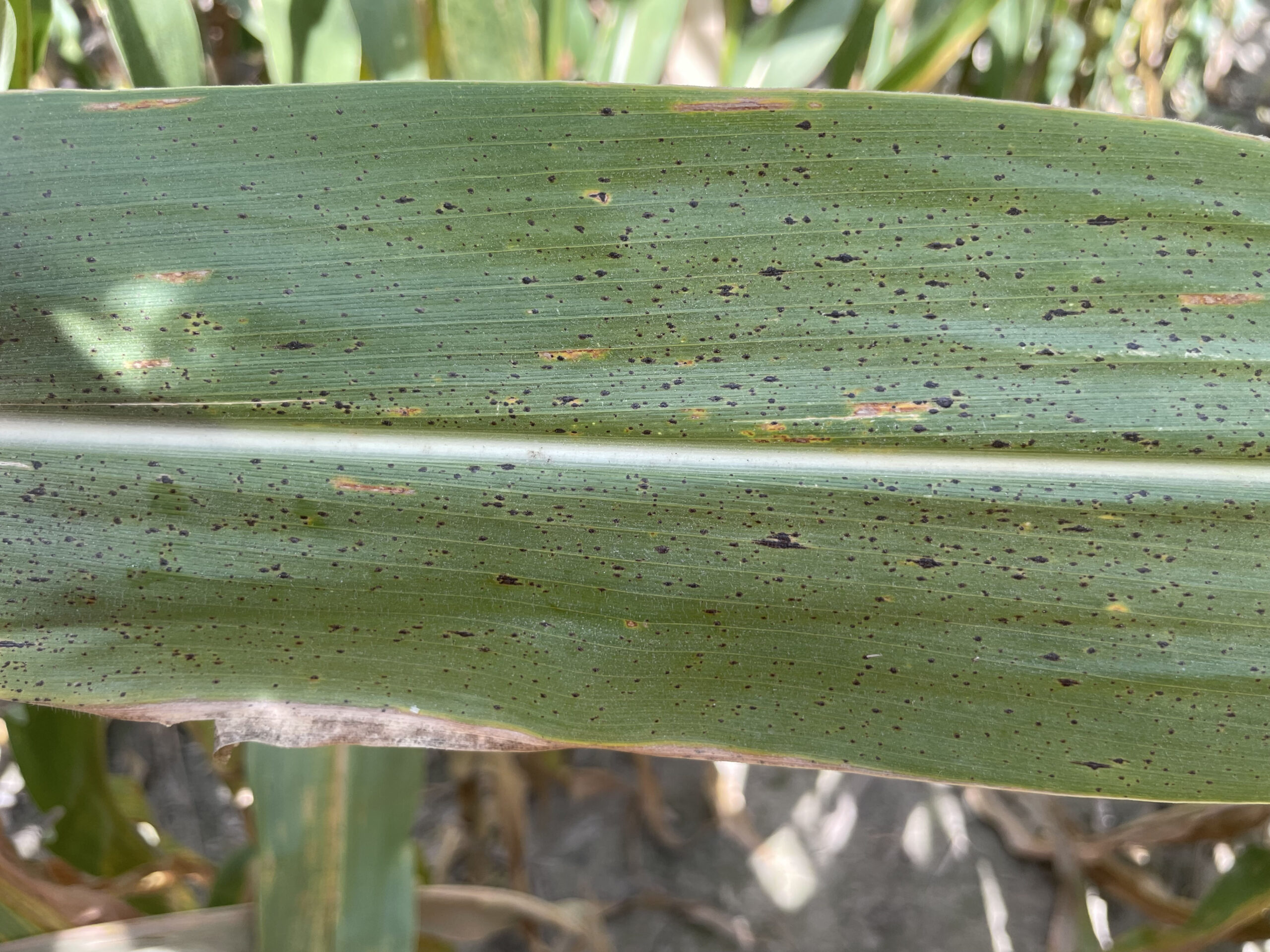Tar spot now confirmed in about a third of Missouri

COLUMBIA, Mo. — University of Missouri Extension state plant pathologist Mandy Bish says tar spot of corn has spread into many new counties in 2023.
Bish recently confirmed tar spot in five more counties. This brings to 31 the number of Missouri counties in which tar spot has been confirmed between 2019 and 2023.
Bish found tar spot in Holt and Marion counties in June of 2023 – the earliest in the year it has appeared in Missouri. In 2022, she did not confirm tar spot in Missouri cornfields until August.
Tar spot can cause severe yield loss on susceptible hybrids. The fungal pathogen that causes tar spot, Phyllachora maydis, prefers temperatures in the mid-60s. While Missouri has experienced extremely high temperatures recently, evenings in the next week are forecast to be milder and may cause the disease to continue spreading. The pathogen can survive Missouri winters.
She cautions growers about late fungicide applications. “I am unaware of any data showing that fungicide applications applied to corn at dent (R5 growth stage) provide an economic return. I am aware of research that demonstrates the opposite.”
She recommends applications at VT-R3 stages. In a press release, Bish said, “Treatments at VT through R3 have shown the most consistent results in research on tar spot management.”
Bish recommends the free Tarspotter app (ipcm.wisc.edu/apps/tarspotter), developed at the University of Wisconsin to help guide 2024 fungicide applications in regions where tar spot is known to be present. This mobile app provides spray recommendations based on current agronomic and weather factors in each field. Bish says the app assumes the pathogen is present, so currently the app is not appropriate for our more southern counties where the pathogen has yet to be reported or confirmed.
When scouting, look for individual stroma or black lesions on leaf surfaces. Tar spot appears as small, raised black spots scattered across the upper and lower leaf surfaces. In severe cases, its stomata appear on leaf sheaths, husks and tassels. Corn is the only known host for tar spot.
The Crop Protection Network, an association of land grant universities, offers many resources on tar spot, including a corn fungicide efficacy chart that is updated annually. Go to https://cropprotectionnetwork.org.
Bish says several factors are known to increase disease risk:
- Tar spot previously found in the field or neighboring fields.
- Field is corn-on-corn rotation.
- Irrigation can hasten the onset of symptoms.
Seed dealers may be able to provide insights on what varieties seem most vulnerable.
Submit samples of suspected tar spot to the MU Plant Diagnostic Clinic for confirmation and to help the clinic track progression of the disease. Confirmed samples will be added to the Corn ipmPIPE map at https://corn.ipmpipe.org/tarspot. Learn about submitting samples at www.plantclinic.missouri.edu.
Also, consider subscribing to the MU Crop & Pest Text Alert System (ipm.missouri.edu/cropPest/textAlert.cfm) to keep up to date with the latest information about tar spot.
Miss Clipping Out Stories to Save for Later?
Click the Purchase Story button below to order a print of this story. We will print it for you on matte photo paper to keep forever.

